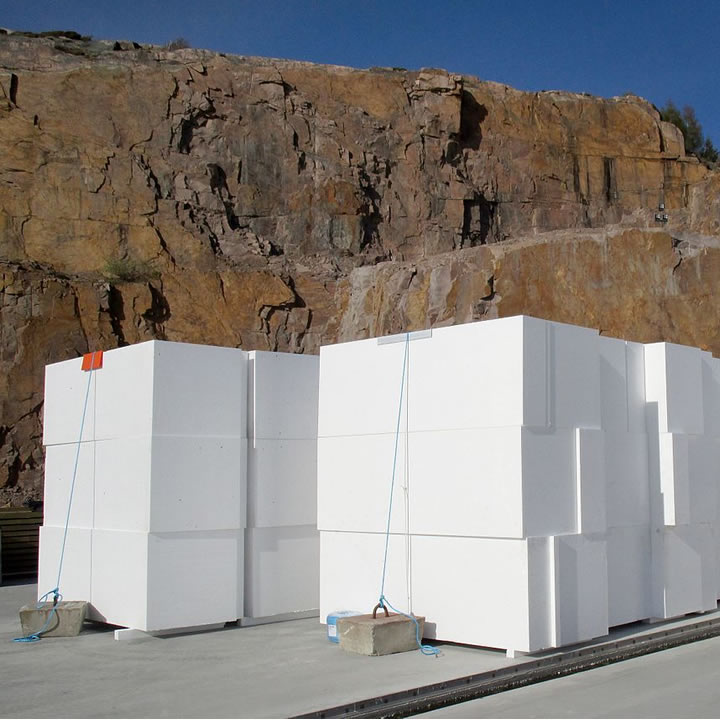Going back to 1965, when the first expanded polystyrene came into being in Michigan, we’ve seen how the world of construction was impacted. Many applications within the construction industry have been extensively using EPS as a light yet rigid material.
The inert nature of EPS makes it resistant to natural decomposition and, thereby, doesn’t attract pests. It is also notable that the manufacturing process of EPS does not involve chlorofluorocarbons or hydrochlorofluorocarbons, which leads to ozone depletion, making it environmentally friendly. This doubles its utility in construction for increased durability.
EPS has excellent strength, superior insulation, and great workability, making it a popular construction material. Here we discuss in depth a few important applications of EPS in construction projects. There are many custom EPS construction components available as per your construction needs.
Lightweight Concrete Aggregate
EPS is widely used as an aggregate in lightweight concrete (LWC), often combined with other waste materials like paper sludge ash.
LWC produced in this way reflects better strength and lesser weight compared to vermiculite, pumice, or clay concrete. Volume expansion characteristic of EPS has been found to reduce thermal conductivity and enhance fire tolerance in LWC.
The non-permeable and hydrophobic properties of EPS concrete make them ideal for cladding panels and composite floorings due to low moisture absorption. EPS concrete has impressive cushioning ability against high impact forces.
That’s why they are used in the top layers of debris dams. Environment friendliness is another aspect of EPS concrete over other traditional materials for walling. They are more flexible and cheaper than sand-based concrete.
Decorative Tiles And Moldings
The overall look of buildings can be improved with the use of decorative moldings. These are mostly utilized to conceal surface gaps and enhance appearance at the same time.
EPS is increasingly preferred over stone for decorative tiles and moldings due to its lighter weight and excellent moisture resistance.
EPS sidings are becoming a common sight in most commercial buildings. It protects the outermost layers from outside elements and provides external beautification.
The strength and insulation of sidings can be improved drastically with the use of EPS foam layers as well. However, weak fire resistance has restricted the use of EPS sidings in residential constructions until now.
Structural Insulated Panel (SIP)
For many years now, structural insulated panels or SIPs are being consistently used in the construction industry. A core made of EPS is sandwiched between two facing layers of structural boards to produce SIP composites. These structural boards could be of sheet metal or oriented strand board (OSB).
SIPs are suitable for various constructions like walls, roofs, and floors. They have an impressive stiffness-to-weight ratio for building applications.
The EPS core resists sliding forces to increase the stiffness of SIP composites. Similarly, the metal or OSB-facing sheets provide better protection against external elements and biological degradations.
Floors made of EPS panels have been found to reduce noise and preserve heat, apart from reducing the overall load for buildings. These panels are preferred for airtight constructions where they minimize leakages for longer maintenance of internal temperatures.
With strengths up to seven times that of natural timber, EPS panels can withstand the harshest weather conditions when used in buildings.
Vacuum Insulated Panel
Vacuum insulated panel (VIP) is an effective alternative to traditional insulation material used for construction. Porous EPS forms the core of VIP, which is enveloped by multiple layers of metal sheet or metalized polymer films for protection.
The responsibility of this EPS at the center is to maintain vacuum for insulation and provide structural rigidity. The protective layers of the envelope handle any external stress on the panels.
These panels exhibit high resistance to heat transfer because of the EPS vacuum. They provide excellent control over their thermal conductivity by changing the permeability of the EPS core.
Embankment Backfilling
Light materials are preferred for embankment fillings to avoid problems of bearing failure and slope instabilities. Embankments over soft soil seem more critical in this regard. EPS geofoam is a lightweight material suitable for backfilling works.
Additionally, it reduces the forces on the walls from the sides. This decreases the chances of bearing failures. EPS is also highly workable. Combined with its water resistance and cushioning abilities, EPS geofoam is an ideal material for backfilling in bridge constructions and road expansions.
In areas prone to landslides, EPS is used for slope stabilization purposes. It assists in reducing forces exerted by landslide materials on the walls and also acts as a strong but lightweight filling for stability.

